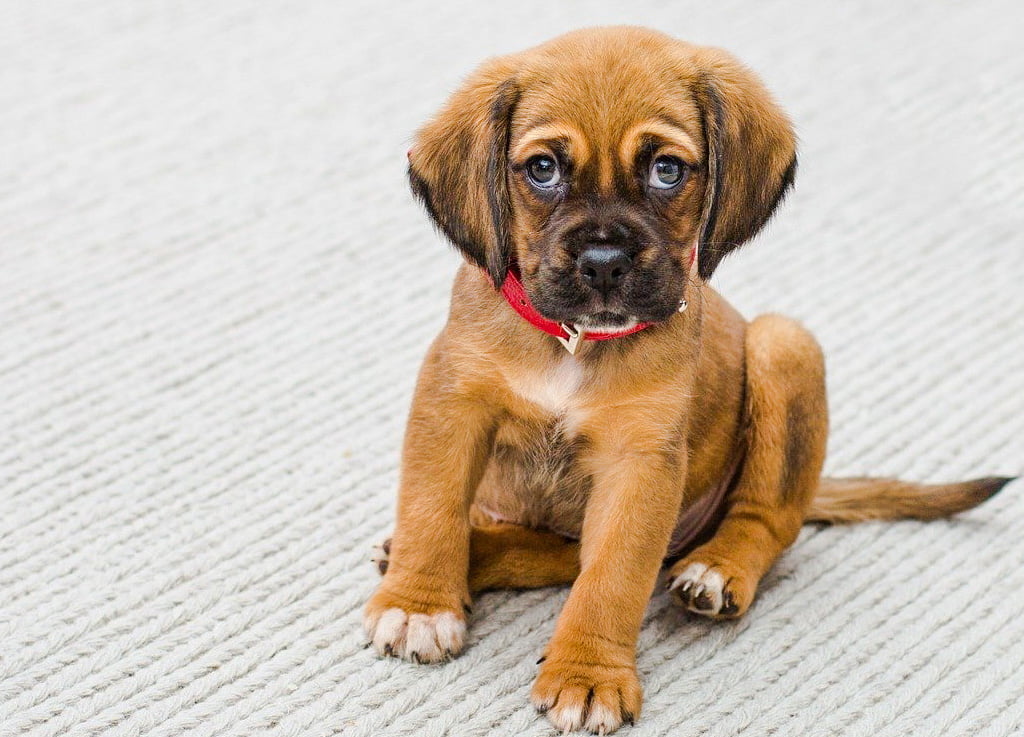Although some people might believe it, it’s not true that cats do not have facial expressions. I would like to get that out of the way initially. Cats do show their mood but it is very subtle and most often it concerns feeling pain. The face becomes tighter and it subtly changes shape. Therefore, domestic cats do have facial muscles to control their expressions. It is just that they are barely noticeable most of the time. In this regard, they are more like their wild cat ancestor whereas the domestic dog has evolved further away from their wild ancestor the grey wolf. Dogs are more domesticated than cats. And this story really is about that. It is the reason why dogs are more expressive through their faces.

However, it is obvious to all that dogs have much more active and efficient facial muscles which allows them to create different facial expressions which in turn allows them to communicate better with their human companions.
A little while ago a report was published about a specific muscle which had evolved around the eyes of dogs and which allowed them to imploringly raise their eyebrows to create an irresistible and compelling request for your love and attention. See below!

A more recent study augments this earlier report in finding that dogs have many facial muscles which is one of the defining differences between the domestic dog and their wild ancestor the grey wolf.
It is clear to scientists that evolution through the 20,000 or 30,000 years of wolf domestication has resulted in dogs’ eyes being humanised or to use a bigger word anthropomorphised. Dogs have become more like their human caregivers over that period of time. In addition, they bark very differently. And further, dogs have lost through selective breeding their ability to howl to scare off wild animals.
Pleading purrs and puppy dog eyes have the same evolutionary purpose
Anne Burrows of Duquesne University in Pittsburgh, USA said: “Wolves don’t really have a whole suite of facial expressions”. However, domestic dogs have the ability to show emotion through facial expressions better than any other animal other than the human-animal.
Burrows also said: “They’re communicating with us and are able to make facial expressions just like us. They want to grab our attention with a facial expression.”
She presented her study at the American Association for Anatomy annual meeting. The presentation looked at whether this evolved ability was linked to fast-twitch facial muscles.
And she said that slow-twitch muscles are more efficient but the expressions that they can produce are less pronounced. However, fast twitch muscles can, as their name suggests, contract very quickly which allows for facial expressions which can be more expressive and more pronounced.
And they found that “dogs have almost all fast-twitch muscles and hardly any slow-twitch fibres at all”.
Wolves have a more even mix between fast and slow twitch muscle fibres. The conclusion is that the domesticated wolf slowly lost their slow twitch muscles during domestication.

Dogs were first domesticated in Paleolithic times which runs up to about 12,000 years ago from about 2 million years ago. Their domestication was by mutual agreement which mirrors what happened to the domestication of the North African wildcat to produce the domestic cat.
It is assumed by most researchers that wolves approached human settlements and were able to elicit scraps of food from people which was the beginning of their domestication. There was mutual benefit. But in order for the then domesticated dog to be more effective in requesting food and other desires, involuntarily there was a gradual process of self-imposed selective breeding. Little-by-little domestic dogs were better able to communicate to their human companions.
And then when formal selective breeding came into being in the past 200 years or so, dog breeders selectively bred into their dogs both physical and personality characteristics which made them more suited to human families and which complied with the breed standard. In doing this, it is suggested that there was a gradual refinement of the abilities of dogs to use a wider range of facial expressions to communicate with people. In other words, some of this evolution was artificially selected rather than more naturally selected over the previous 20,000 years.
That is my interpretation of the study. I guess the question that remains is whether eventually cats will evolve a similar range of facial expressions with the ability to produce doe-eyed faces which are so enticing to humans. As the cat has been domesticated about 10,000 years, they have another 10,000 or more years to develop those all-important muscles around their eyes.
I would expect in around 10,000 years’ time to see cats using the same kinds of facial expressions we now see dogs produce.

